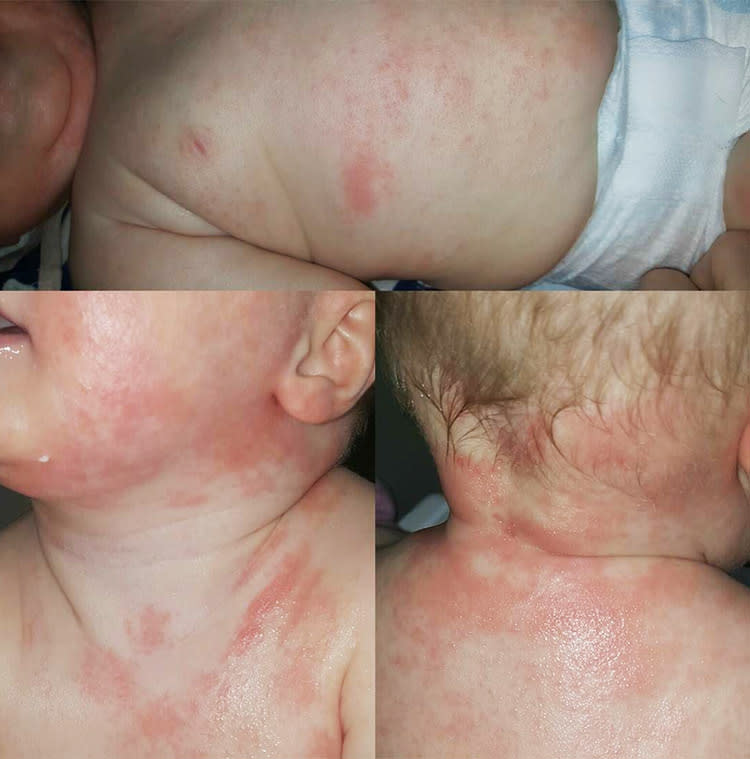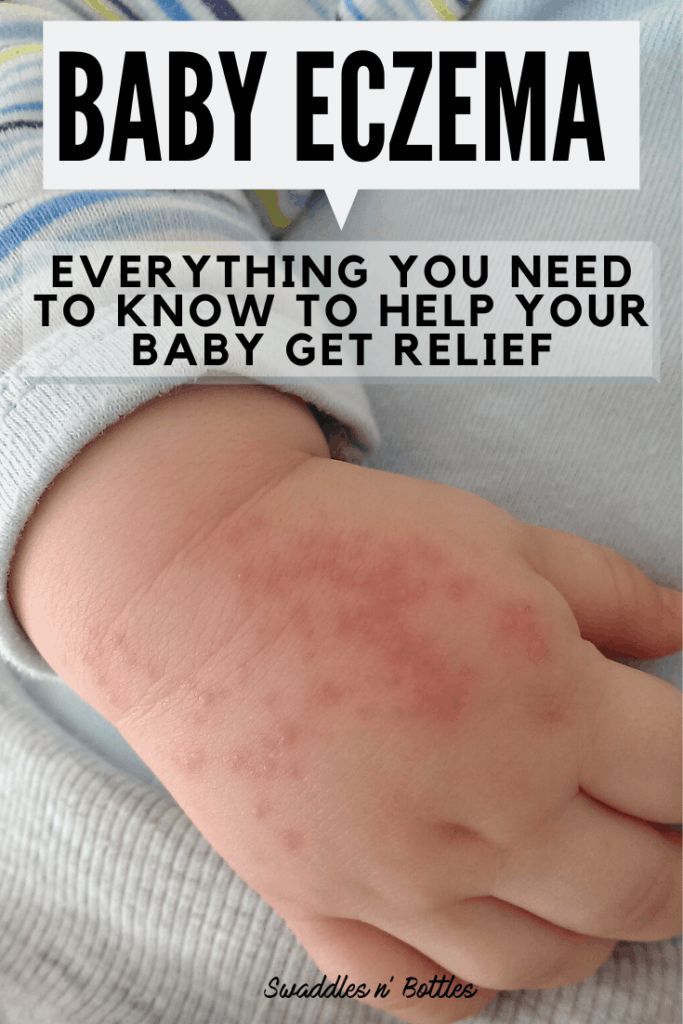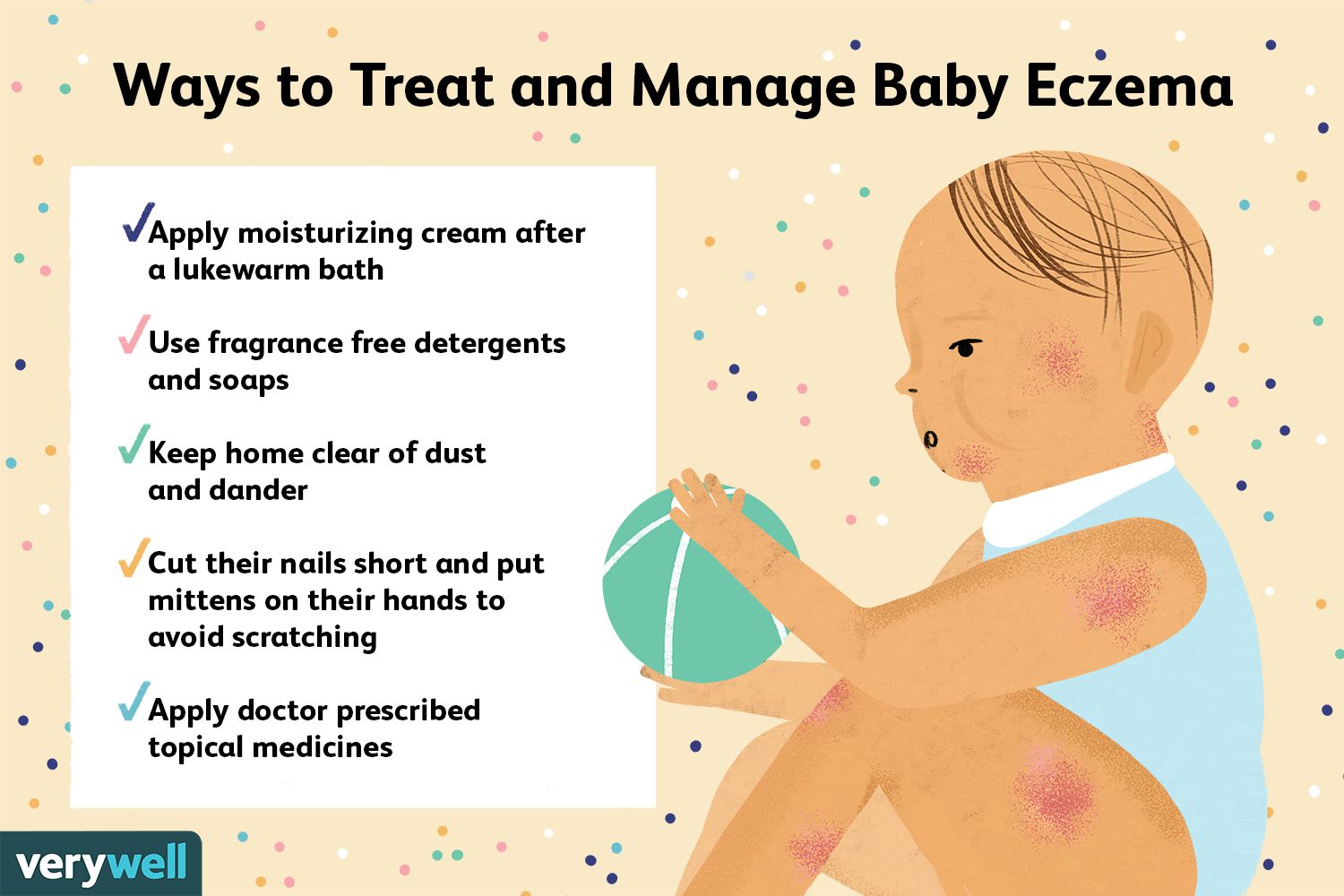[foxdark]
[2 Month Old Baby Eczema: Causes, Symptoms, And Treatment]

Executive Summary

Eczema, also known as atopic dermatitis, is a common skin condition that affects babies and young children. While it can be frustrating for both parents and the child, it is generally a treatable condition. This article explores the causes, symptoms, and treatment options for eczema in a 2-month-old baby. We will delve into the factors that contribute to eczema, the telltale signs to watch out for, and the most effective ways to manage and alleviate this condition.

Introduction
Eczema is characterized by itchy, red, and inflamed patches of skin. It’s a common condition that affects about 10-20% of infants, and while it can be concerning for parents, it usually isn’t serious. However, it’s important to understand the causes, recognize the symptoms, and know how to manage eczema to help your baby find relief and prevent complications. This article aims to provide parents with a comprehensive guide on eczema in 2-month-old babies.
What causes eczema in a 2-month-old baby?
Eczema is a complex condition with a variety of contributing factors. However, it’s usually a combination of genetics and environmental factors that play a role.
- Genetics: A family history of eczema, asthma, or hay fever increases the risk of developing eczema.
- Immune System: Babies with eczema have a tendency to overreact to certain allergens, such as dust mites, pet dander, and pollen.
- Dry Skin: Babies with eczema tend to have dry, sensitive skin that is easily irritated.
- Environmental Factors: Certain environmental factors can trigger or worsen eczema, such as harsh soaps, detergents, and clothing fabrics.
What are the symptoms of eczema in a 2-month-old baby?
The symptoms of eczema can vary from baby to baby, but some common signs to watch out for include:
- Dry, itchy patches of skin: These patches are often red, scaly, and can be found anywhere on the body, but are most common on the face, arms, legs, and diaper area.
- Rashes: These rashes can be red, inflamed, and bumpy.
- Weeping sores: These sores can develop if the eczema is severe or scratched.
- Crusting: If the eczema is severe, the affected areas may become crusted.
- Thickened skin: This occurs when the skin has been irritated or scratched for a long period of time.
What are the treatment options for eczema in a 2-month-old baby?
Treating eczema involves addressing the underlying causes and providing relief from the symptoms. The first step is to identify and avoid any potential triggers. There are also a number of topical treatments available, such as:
- Moisturizers: Using a fragrance-free, hypoallergenic moisturizer frequently can help to hydrate the skin and prevent it from becoming dry and irritated.
- Topical corticosteroids: These medications are available in different strengths and are often used to reduce inflammation and itching.
- Antibiotics: These are sometimes prescribed to treat bacterial infections that can develop as a result of scratching.
- Antihistamines: These medications can help to reduce itching and promote sleep.
What are some home remedies for eczema in a 2-month-old baby?
There are a number of home remedies that can help to soothe eczema and reduce symptoms. These remedies are often used in conjunction with conventional treatment options.
- Cool compresses: Applying a cool compress to the affected areas can help to reduce inflammation and itching.
- Oatmeal baths: Adding colloidal oatmeal to bathwater can help to soothe the skin and reduce irritation.
- Coconut oil: Coconut oil is a natural moisturizer that can help to hydrate the skin.
- Aloe vera: Aloe vera can be used topically to soothe the skin and reduce inflammation.
How can I prevent eczema in my 2-month-old baby?
While you can’t always prevent eczema, there are steps you can take to reduce your baby’s risk of developing it. These include:
- Moisturizing: Keep your baby’s skin hydrated by using a fragrance-free, hypoallergenic moisturizer daily.
- Bathing: Keep bath time short and use lukewarm water. Avoid harsh soaps and detergents.
- Clothing: Dress your baby in soft, breathable clothing made of natural fibers like cotton. Avoid wool or synthetic fabrics.
- Environment: Keep your baby’s environment clean and dust-free. Regularly wash bedding and soft toys in hot water.
Causes of Eczema in a 2-Month-Old Baby
Eczema in infants is often caused by a combination of factors, including:
- Genetics: If you or your partner have a history of eczema, your baby may be more likely to develop it.
- Immune System: Babies with eczema tend to have a more sensitive immune system, and they are more likely to react to certain allergens, such as dust mites, pet dander, and pollen.
- Dry Skin: Babies with eczema have a tendency to have drier skin than other babies. This is because their skin barrier, which helps to keep moisture in, is not fully developed.
- Environmental Factors: Certain environmental factors can also trigger or worsen eczema. These include:
- Irritants: Harsh soaps, detergents, and perfumes can irritate the skin and worsen eczema.
- Allergens: Dust mites, pet dander, pollen, and mold are common allergens that can trigger eczema.
- Stress: Babies who are under stress, such as from illness or changes in their routine, may be more likely to develop eczema.
Symptoms of Eczema in a 2-Month-Old Baby
Eczema can manifest in a variety of ways, but some common symptoms include:
- Red, itchy patches: These patches of skin are often dry, scaly, and can be found anywhere on the body, but are most common on the face, arms, legs, and diaper area.
- Rashes: The rash can be red, inflamed, and bumpy.
- Weeping sores: These sores can develop if the eczema is severe or scratched.
- Crusting: If the eczema is severe, the affected areas may become crusted.
- Thickened skin: This can occur when the skin has been irritated or scratched for a long period of time.
Treatment Options for Eczema in a 2-Month-Old Baby
Treating eczema involves addressing the underlying causes and providing relief from the symptoms. This often involves a combination of approaches, such as:
- Avoiding triggers: The first step in treating eczema is to identify and avoid any potential triggers. This may involve making changes to your baby’s diet, cleaning routine, or clothing choices.
- Topical treatments: There are a number of topical treatments that can help to soothe eczema and reduce symptoms. These include:
- Moisturizers: Using a fragrance-free, hypoallergenic moisturizer frequently can help to hydrate the skin and prevent it from becoming dry and irritated.
- Topical corticosteroids: These medications are available in different strengths and are often used to reduce inflammation and itching.
- Antibiotics: These are sometimes prescribed to treat bacterial infections that can develop as a result of scratching.
- Oral medications: In some cases, your doctor may prescribe oral medications to help manage eczema. These may include:
- Antihistamines: These medications can help to reduce itching and promote sleep.
- Immunomodulators: These medications help to suppress the immune system and reduce inflammation.
- Light therapy: This treatment involves exposing the affected skin to ultraviolet light. It can be helpful for some people with severe eczema.
Conclusion
Eczema is a common condition that affects babies and young children. While it can be frustrating for both parents and the child, it is generally a treatable condition. By understanding the causes, recognizing the symptoms, and knowing how to manage eczema, you can help your baby find relief and prevent complications. If you have concerns about your baby’s eczema, talk to your pediatrician. They can help you create a treatment plan that is tailored to your baby’s individual needs.
Keyword Tags
- Baby eczema
- Eczema treatment
- Atopic dermatitis
- Baby skin care
- Infant eczema